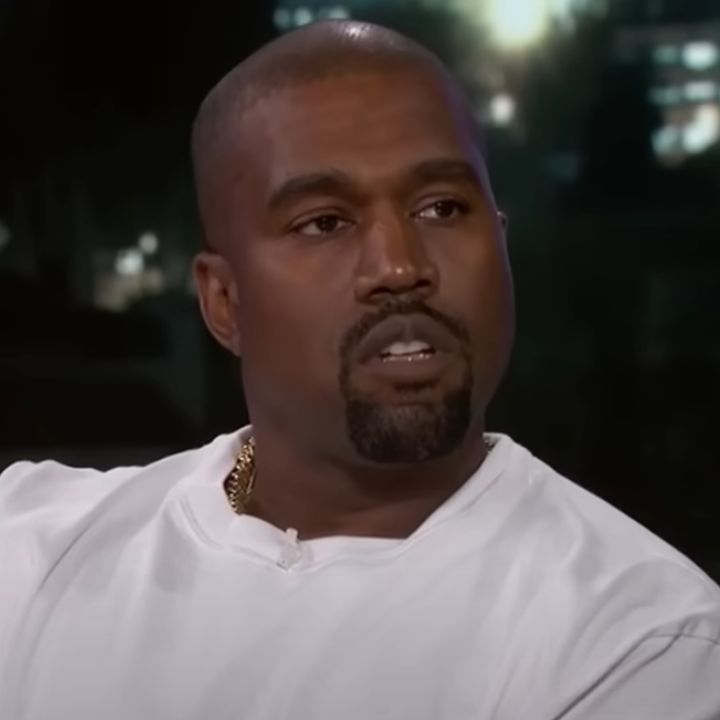When you think of musicians raking in millions, you probably picture streaming hits or sold-out concerts. But for many artists, merchandise—T-shirts, hoodies, vinyl, and even cereal boxes—brings in more cash than their actual music. With streaming platforms paying fractions of a cent per play, merch has become a major income stream. Some stars have turned their logos and slogans into global fashion brands. Here are 10 musicians who earn more from their merch than from their music.
1. Kanye West
Kanye’s music empire is impressive, but his Yeezy brand made him a billionaire before Adidas ended their partnership. At its peak, Yeezy generated over $1.5 billion annually, with Kanye pocketing a massive royalty share. Meanwhile, his music—though popular—can’t compete with the apparel juggernaut. His merch isn’t just concert tees—it’s streetwear gold. Even post-scandal, his drops still spark major resale demand.
2. Travis Scott
View this post on Instagram
Travis is the king of brand crossovers, turning his music fame into merchandising mastery. From his iconic McDonald’s meal and matching tees to his lucrative Nike deals, his merch eclipses music royalties. His “Astroworld” tour alone pulled in millions in merch revenue. Fans eagerly buy everything from action figures to scented candles. Scott’s branding is a cultural movement as much as a business strategy.
3. Beyoncé
View this post on Instagram
While Beyoncé’s albums top charts, her merch—especially under the Ivy Park label—brings in major profits. Her Adidas collaboration sold out in hours and created global buzz. Tour merchandise from her Renaissance World Tour fetched premium prices, with custom jackets and accessories going viral. Beyoncé blends fashion and fandom seamlessly. Her name alone guarantees sales beyond music platforms.
4. Slipknot
View this post on Instagram
This metal band may not dominate mainstream charts, but they dominate the merch game. Slipknot’s aggressive branding—masks, jumpsuits, and horror-themed gear—has created a cult following. Fans often spend hundreds per show on exclusive merchandise. They even sell replica masks that become collector’s items. For Slipknot, the merch is as iconic as the music itself.
5. Taylor Swift
View this post on Instagram
Taylor’s eras aren’t just musical—they’re merchandise empires. Each album cycle launches themed drops that include everything from cardigans to friendship bracelets. At her Eras Tour, merch lines reportedly stretched longer than some of her songs. Swifties spend big to show off their loyalty. And with Taylor owning her brand fully, most of those profits go straight to her.
6. KISS
View this post on Instagram
KISS turned their theatrical rock persona into one of the biggest merchandising machines ever. With over 5,000 licensed products—from lunchboxes to pinball machines—they’ve earned more from merchandise than from music or touring. Gene Simmons famously said they’ve made more selling their brand than their songs. Even non-fans recognize the face paint and flaming logo. KISS built the blueprint for band-based branding.
7. BTS
View this post on Instagram
This K-pop powerhouse sells out stadiums—but it’s the merchandise that keeps the money flowing. BTS fans, known as ARMY, collect light sticks, clothing, dolls, and even skincare lines. The group’s official merch often sells out in minutes, creating resale frenzies. With limited drops and seasonal collections, their merchandising rivals fashion houses. BTS’s reach proves that merch is global currency.
8. Post Malone
View this post on Instagram
Posty doesn’t just sell music—he sells himself as a lifestyle. From Crocs collaborations to custom beer pong sets, his quirky image powers unique merchandise. His fans love the blend of humor, comfort, and chaos. While his streaming numbers are massive, his exclusive collabs often rake in more per unit. And he’s just getting started with fashion lines and branded beverages.
9. Justin Bieber
View this post on Instagram
Bieber Fever turned into Bieber Fashion with his “Drew House” label. What started as tour merch evolved into a full-blown clothing line worn by influencers and fans alike. Unlike basic tees, Drew House items are fashion-forward and priced like streetwear. Justin’s minimalist smiley face logo has become a retail phenomenon. It proves that musicians can lead fashion—not just follow it.
10. Tyler, The Creator
View this post on Instagram
Tyler’s “Golf Wang” and “Golf Le Fleur” brands are cult favorites that outsell his album earnings. The colorful, creative line reflects his personal style and connects deeply with fans. Tyler’s merch drops feel like limited-edition art collections. His music fuels the hype, but the clothing keeps the cash coming. In his case, the music is the trailer—the merch is the feature.
Merch Is More Than a Side Hustle
For many musicians, merchandise is no longer just tour swag—it’s the backbone of their brand. As streaming pays less and fans crave personal connection, merch gives artists a direct line to loyal followers. The smartest stars aren’t just selling songs—they’re selling identity, emotion, and style. In a world of digital music, tangible items bring fans closer. And those fans? They’re more than listeners—they’re walking billboards.
Which artist’s merch do you own—or want to own? Drop your favorites in the comments and let’s see who’s turning music into money!
Read More
Loren Gray’s Net Worth: From Musical.ly to Millions
These Indie Artists Are Quietly Worth Millions—and You’ve Never Heard Their Names

Amanda Blankenship is the Chief Editor for District Media. She frequently writes for a handful of blogs and loves to share her own personal finance story with others. When she isn’t typing away at her desk, she enjoys spending time with her daughter, son, husband, and dog. During her free time, you’re likely to find her with her nose in a book, hiking, or playing RPG video games.


